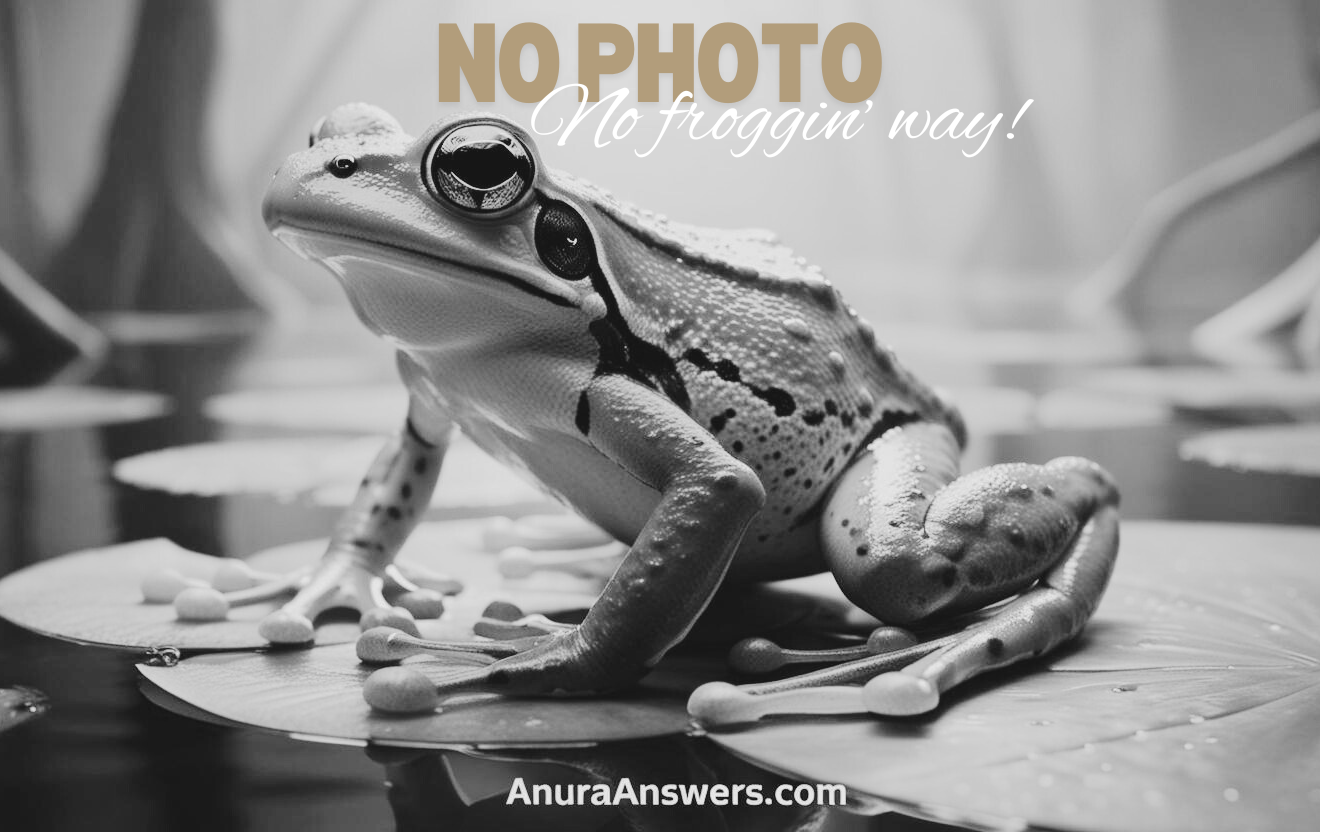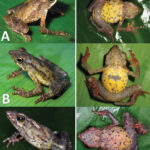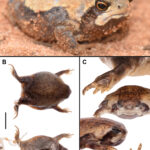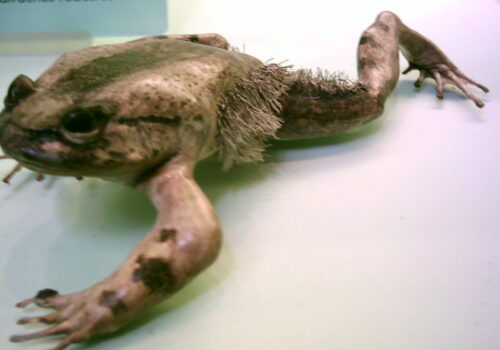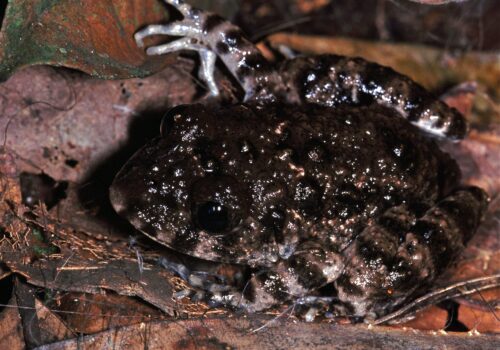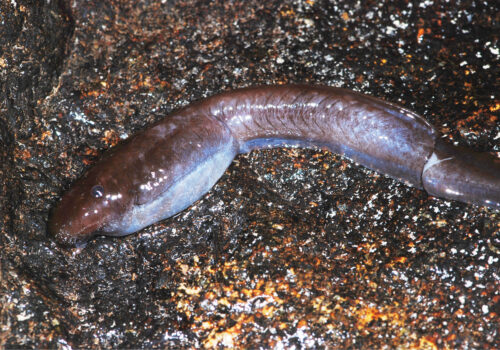- Mannophryne vulcano: Discovering the Enigmatic Volcano Frog of Venezuela
- Taxonomy and Classification
- Natural Habitat: A Frog of Cloud-Shrouded Volcanoes
- Physical Characteristics: Beauty in Miniature
- Behavior and Life Cycle: The Subtle Strategies of Survival
- Ecological Role: Small Frog, Profound Impact
- Threats and Conservation Status: The Fragility of Island Habitats
- Cultural and Scientific Significance
- Conclusion: A Call for Understanding and Action
Mannophryne vulcano: Discovering the Enigmatic Volcano Frog of Venezuela#
Throughout the lush highland forests of northern Venezuela, nestled within misty cloud-covered mountains, lives a small amphibian that embodies the delicate connections between humanity, ecology, and biodiversity. Known scientifically as Mannophryne vulcano, this remarkable frog captivates scientists and nature enthusiasts alike with its unique adaptations, vibrant behaviors, and vital role in its ecosystem. Often referred to simply as the Volcano Frog, Mannophryne vulcano offers us a snapshot into the exquisite complexity of tropical biology and conservation efforts aimed at protecting vulnerable species in rapidly changing landscapes.
While frogs commonly conjure images of ponds and lily pads, the Volcano Frog defies these stereotypes by thriving far from watery tranquility amid rugged volcanic slopes and humid, evergreen cloud forests. An embodiment of resilience evolved for a dynamic habitat, this diminutive amphibian species invites us to broaden our understanding of frogs and the extraordinary habitats they call home.
Taxonomy and Classification#
Mannophryne vulcano belongs to the family Aromobatidae, a group commonly referred to as cryptic forest frogs or sometimes aromatic frogs because of their subtle signature compounds. This family is well-known for their intriguing reproductive strategies and the complex chemical communications many exhibit. Reflecting closely related species, Mannophryne vulcano shares its genus with approximately 20 other species native primarily to northern South America and the Caribbean, particularly concentrated in Venezuela.
Within its group, subtle physical features and reproductive habits ascertain its specific identity. Scientists classified it distinctly in 2004, marking it as a recent addition to the biodiversity records. Its relatively recent discovery highlights the profound gaps that still exist in our understanding of tropical rainforest species and underscores the fragile nature of their unexplored habitats.
Natural Habitat: A Frog of Cloud-Shrouded Volcanoes#
Geographical Range and Distribution#
Found exclusively in a limited area of mountainous habitat in northern Venezuela, Mannophryne vulcano thrives on volcanic slopes and undulating mountain ridges that catch moisture-laden clouds drifting from the Caribbean Sea. This tiny frog inhabits the northern slopes of Cerro El Volcán, a unique geographic feature characterized by deep canyons, steep cliffs, and tumultuous geological history.
The restrictive geographical range of this species makes its existence particularly precarious, emphasizing the importance of conserving its unique microhabitats. Its limited range makes the Volcano Frog a sentinel for evaluating ecological balance. Any threat posed by habitat destruction, climate change, or human encroachment immediately impacts its delicate population balance.
Microhabitat Preferences#
Unlike frogs traditionally recognizable for their association with standing bodies of water, Volcano Frogs have adapted uniquely for life within terrestrial, semi-aquatic environments. Rather than broad, still bodies of water, these frogs depend heavily on small, cool mountain streams, trickling rivulets, cascading waterfalls, and moisture-saturated terrestrial microhabitats close to freshwater runoff.
Extensive leaf litter, moss-covered logs, and shaded, humid understory habitats form the intricate framework of their daily existence. Their preference for richly vegetated stream banks allows these frogs to remain relatively hidden and safe from predators, underlying their unique adaptation to life on volcanic slopes in the cloud forests of Venezuela.
Physical Characteristics: Beauty in Miniature#
An encounter with the Volcano Frog instantly intrigues viewers: despite their small stature—measuring less than an inch from snout to the vent—these amphibians command attention through vivid colors and intricate skin textures. A delicate balance of bright and subdued colorations equips them perfectly for camouflage within leaf litter and dark forest floor habitats.
Adults display striking tones of chocolate-brown to greyish-black, contrasted gracefully with bright yellow, orange, or rust-red markings. Notably, females tend to exhibit richer colorations and larger body sizes compared to males, a common yet fascinating dimorphism within frog species.
Their smooth yet faintly granular skin helps them blend seamlessly into their moist surroundings where intricate lichens, mosses, and rotting foliage abound. Such camouflage becomes essential for survival in habitats replete with predators.
Adaptations for Survival#
Physical adaptation goes beyond coloration. Slim and agile body structures facilitate transverse leaps and swift movements through small streams and tangled vegetation, making them elusive prey. Also notable is their robust posterior musculature, allowing powerful, directional jumps, essential both for hunting prey and avoiding danger.
In addition, the skin of Mannophryne vulcano secretes subtle chemicals likely involved in communication and anti-predator mechanisms, characteristic traits prevalent among Aromobatidae frogs. Although research remains ongoing, preliminary studies suggest that these compounds assist in predator deterrence and communication during mating seasons.
Behavior and Life Cycle: The Subtle Strategies of Survival#
Diet and Feeding Habits#
The Volcano Frog’s diet predominantly consists of small insects, invertebrates, and other arthropods abundant in its moist forest habitat. Using quick, highly specialized hunting strategies, these frogs emerge primarily during early morning and dusk to swiftly capture prey concealed under leaf litter and mossy rocks.
Employing keen eyesight adapted to dim forest floors, they pinpoint prey movements with precision. The ecological role they play in regulating insect populations is notably significant, directly contributing to maintaining equilibrium within their delicate forest ecosystem.
Mating and Reproduction: An Engaging Parental Partnership#
Perhaps the most intriguing aspect of Volcano Frog behavior concerns its fascinating reproductive strategy. Mating involves elaborate vocalizations by males from concealed spots near streambanks, enticing females through melodic yet cryptic choruses. Once a mate is selected, courtship advances quietly with a tactile exchange.
After fertilization, the female carefully lays tiny clusters of gelatinous eggs in hidden, moist crevices adjacent to freshwater streams or among damp leaf litter, ensuring humidity remains optimal. What makes the reproductive behavior remarkable is their refined parental care: after hatching, males guard the eggs, diligently attending and watching over the clutch to protect from desiccation, fungal attacks, or predation.
Upon hatching, tadpoles are transported to nearby water sources by their attentive fathers—each tadpole gently nestled and moved one-by-one on the male’s back. This parental care strategy serves as a testament to evolutionary ingenuity and underscores the nuances of the Volcano Frog’s ecological existence.
Ecological Role: Small Frog, Profound Impact#
The Volcano Frog maintains an indispensable ecological thread within its environment. Acting as both predator and prey, dynamics of its population ripple through food webs, affecting insect populations, plant health, and energy flows within microhabitats.
Furthermore, as bioindicators, frogs like Mannophryne vulcano inform scientists about environmental health. Their permeable skin and narrow habitat tolerance render them extremely sensitive to environmental degradation, making their welfare indicative of broader ecological stability or distress.
Threats and Conservation Status: The Fragility of Island Habitats#
Currently evaluated as Vulnerable by the International Union for Conservation of Nature (IUCN), Mannophryne vulcano faces ongoing threats primarily driven by habitat destruction, deforestation associated with agriculture, and broader climate change impacts altering rainfall patterns and stream water availability.
Conservation organizations and researchers are tirelessly advocating for preserving these precious habitats through initiatives that combine local community engagement, habitat restoration, scientific monitoring, and educational outreach efforts, aiming toward informed conservation standards.
Cultural and Scientific Significance#
While local communities recognize and respect the frog as a dweller of mystic mountainous habitats, modern scientific research emphasizes the frog’s importance as an ecological indicator species. Researchers are exploring the secretions produced by their skin, keenly studying potential biochemical properties beneficial for understanding health, ecology, and bioindicator roles in changing climate scenarios.
Conclusion: A Call for Understanding and Action#
The survival of Mannophryne vulcano speaks volumes about humanity’s ability to coexist sustainably with our planet’s delicate ecosystems. By fostering deeper appreciation and knowledge about species such as the Volcano Frog, we bolster our resolve to protect vulnerable habitats, maintain ecological integrity, and build a richer, more biodiverse future.
By sharing their story and advocating for their habitats, we honor their unique existence and step closer to ecological harmony.
